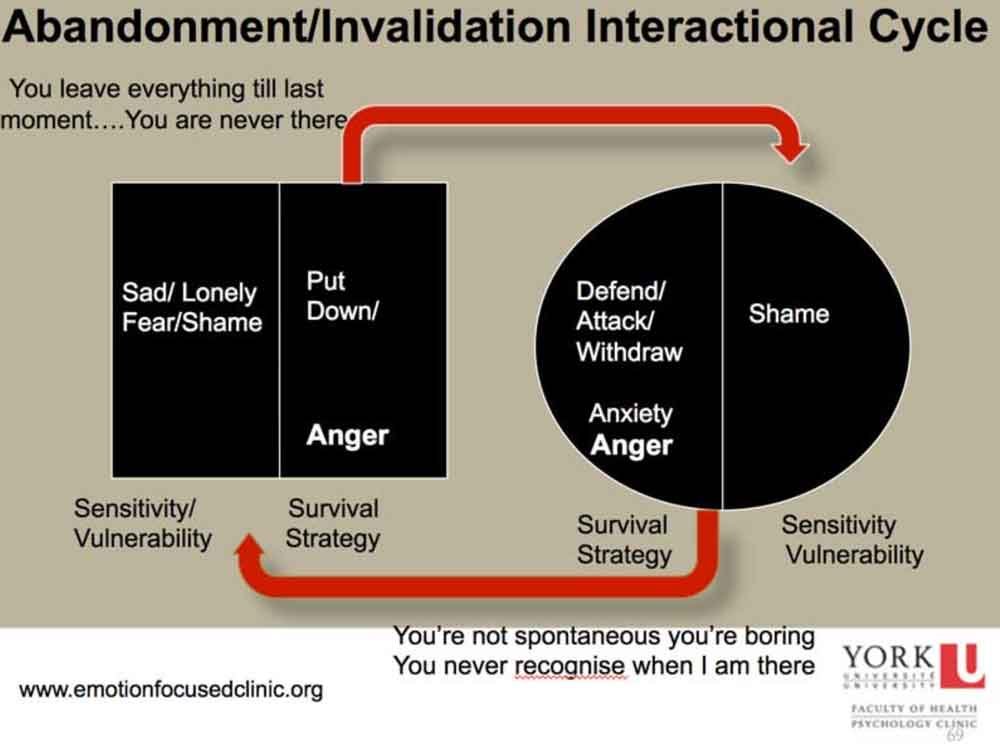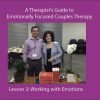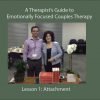Emotions are the glue that make people stick together and that bring us all the positive feelings that make us want to spend time together. They give us the spark of passion, the comfort of belonging, the pride of feeling special, and the enjoyment of feeling known and understood.
Unfortunately, emotions are also what make relationships difficult. They can overwhelm us, they can shut us down, and they can make us say and do things that give us a sense of being out of control.
A relationship can bring out the best and can bring out the worst in our human nature. They can lead a president to risk his reputation for a night of passion, and a football player to murder his wife out of jealousy and anger.
No wonder then that many people have an ambivalent relationship with their emotions: They both fear them and like them.
But no matter what your opinion is, it is clear that you need to learn how to understand your emotions and know what to do with them in order to be successful in your relationships with others.
In this article, I will teach you the one thing every couple should know about emotions in order to make their relationship work.
The Fundamental Thing You Need to Know about Emotions:
One thing that was really helpful to me when I first started to study how emotions really work was the distinction made between primary emotions and secondary emotions. This distinction helped me understand my own emotional reactions much better and it has become one of the key principles of the many forms of emotion focused therapies that are currently being used to help individuals and couples.
Once you understand this distinction, you will have one of the most important tools at your disposal to turn negative interactions in your relationship around.
Primary Emotions and Secondary Emotions:
A primary emotion is the first emotion we feel in response to a particular event in our environment. If we wanted to state it simply they refer to how we really feel.
In many situations, however, our primary emotions get covered over by secondary reactions to our primary emotions.
If I feel hurt or sad about my partner saying that he prefers to spend a night on the town with his guy friends, rather than a relaxing night at home with me, I might have an emotional reaction to feeling sad or hurt.
I might for example feel guilty because I don’t think I should need anyone and have learned that I should never prioritize my own needs over those of others.
However, I could also feel embarrassed or ashamed because I believe it is pathetic and weak for me let someone else have this kind of sway over me.
Another possibility would be that I feel angry that my partner does not want to hang out with me and get resentful because I do not want to feel pushed aside and demand to be a higher priority than his friends.
All of these secondary reactions to my primary emotions transform this emotion into something else than what it initially was.
Secondary Emotions Distort How We Really Feel:
If I feel guilty about wanting more of my partner’s time and attention, I can then no longer express my sadness at not having my need met. The guilt blocks me from expressing my sadness. It may also block me from even admitting to myself that I feel sad, and so I may not even have the ability to comfort myself and deal with my sense of loss or disappointment on my own.
Because the primary feeling gets blocked by the secondary feeling, I end up distorting my own original experience. This means that the original emotion cannot be resolved and can no longer be used to guide my actions.
My primary emotion goes underground, and instead gets replaced by my secondary emotion, which may now lead to a quite different reaction.
Instead of saying “it kind of hurt my feelings when I think you would rather spend time with others than with me”, I now instead end up withdrawing emotionally (guilt: I should not express my needs, I don’t deserve to have my needs met), or reacting with anger (I don’t deserve to be treated this way)
Why Secondary Emotions are Destructive in Relationships:
Les Greenberg, an emotion focused therapist at York University in Canada, illustrates how secondary emotions lead to fights and emotional distance in relationships:
The wife (represented by the square) feels sad because she thinks her husband is not really there for her. She also feels shame deep down because she thinks his inattention means he does not find her interesting or attractive, and fear because she worries that he might eventually leave her. What she shows him, however, is her secondary reaction of anger (“why are you never there for me”) and contempt which leads to a personal attack (“You are so selfish”).
The husband (represented by the circle) does not really know about his wife’s primary emotions because she does not show those to him. They are too sensitive and vulnerable, and his wife may either not be fully aware of them, or may have shame, guilt, or fear about expressing them.
Instead, the husband hears criticism from his wife and starts to feel like he is deficient or not really who she wants. This activates his own primary feeling of shame or inadequacy. However, because he does not want to show this wound to his wife, who does not seem compassionate or understanding, he instead feels angry and goes on the attack (“you can never just go with the flow. You are so boring”). Alternatively, he may feel anxious and afraid. This will make him withdraw more from the relationship or simply adopt a strategy of “go along to get along”. If fear wins rather than anger, then he will gradually shut down his real self, and stop expressing his real viewpoints. His wife will then likely feel frustrated that he does not appear to be whole-heartedly in the relationship, and may become even more sad, afraid, and ashamed, which she may express as another round of anger and put-downs.
This couple are now stuck in a vicious cycle of secondary emotions which hide what they really feel. Because no one has ever taught them about the distinction between primary emotions and secondary emotions, they don’t know to stop up and ask themselves: What do I really feel? Instead what they feel and how they react to how they feel become muddled and confused, and they begin to have arguments about their secondary emotions rather than their primary needs.
Here Is One Thing You Can Do Today to Begin to Turn Your Relationship Around:
So, now that you know the distinction between primary emotions and secondary emotions, ask yourself the following questions:
- What are my primary feelings? Am I really expressing what I truly feel?
- What is it that I truly feel? Do I feel sad/ lonely?, shame/ not good enough? fear/ afraid that my partner will leave me or is losing interest in me?
- What gets in the way of me expressing how I really feel? Do I feel embarrassed, guilty, afraid, hopeless, sad/ not expecting to be understood
- What do I actually express to my partner? Do I complain about all the ways my partner lets me down? Do I shut down or become more distant? Or do I attack my partner's personality and try to cut my partner down?
Next time try something different. With your new emotional awareness, start a conversation by using the sentence below:
When I (4) ______________, it is because I really feel (2) ___________________, but I hide that from you because (3) ____________________________________.
When we begin to understand ourselves and our own emotional reactions better, we gain the skills to make our emotions work for us rather than against us. Now we can more effectively use our emotions as a guide to what we really want, and can express these emotions in a way that maximizes our chances that our partner can hear us.
About Me: I am Rune Moelbak, Ph.D., psychologist and couples therapist in Houston, TX. Visit my website to read more about emotionally focused couples therapy


























